Note: This text was created with the help of AI.





















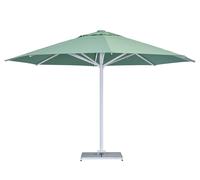




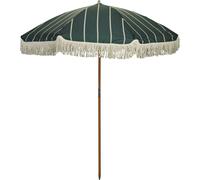




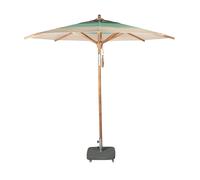

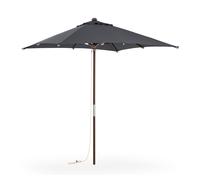


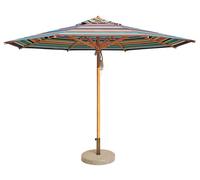
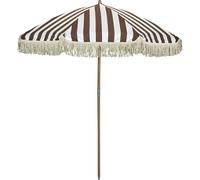


- 1
- 2
- 3
- 4
- 5
- next page
Exciting offers for Parasols
The larger the parasol, the more protective shade it offers. However, the question of the appropriate size depends on the space you have available on your balcony, terrace or in your garden.
Round models with a diameter of 150 to 200 centimetres are suitable for small balconies.
If you have a lot of space outside and are looking for an umbrella that will provide you, your family and your friends with sufficient shade even when you are eating together, you are well advised to choose a square umbrella. Square and rectangular models are available in many different sizes. Before ordering, it is best to measure with the help of a folding rule which area the umbrella should ideally cover. For garden parties and events we recommend to use a gazebo that protects your guests not only from the sun, but also from rain.
The UV Standard 801 label indicates the exact UV protection level (UPF) - levels 10, 15, 20, 30, 40, 60 and 80 can be achieved. The respective class is the multiplier of your skin's own protection time. If you like to spend entire days in your garden or on your balcony, the UPF of your umbrella should ideally be 80. Below this level, the self-protection time of your skin increases by a factor of 80.
Accordingly, you will also get a tan under a sunshade. On long days in the sun, you should still rub a sunscreen on your skin.
A firm anchoring of the parasol on the balcony is not possible. With a parasol stand filled with sand or water, you can still ensure that your balcony parasol is sufficiently stable.
Particularly practical, especially if you don't have a lot of space on your balcony, are parasol holders that you can attach either to the parapet or the railing.
Another option is to attach it to the wall of the house. However, you will have to drill into the façade and therefore need your landlord's permission.
Beach umbrellas are put directly into the sand. It is easy to make the umbrella hold somehow. However, a little trick is needed to ensure that the umbrella doesn't fly up and away at the first gust of wind.
With a little water and sand, you can easily pour your own foundation. To do this, dig a hole with a small shovel and fill it with damp sand, which you fetch from the shallow water on the shore with a bucket. If you now put the umbrella into the hole filled with silt, it will hold tightly. You find a great choice of sand toys including shovels and watering cans/buckets on our website.
This method is only suitable if you always set up the umbrella in the same place. It is also not feasible on the balcony.
Umbrella stands that are additionally weighted down with plates are flexible and stable at the same time. On the balcony, I recommend that you also tie the umbrella to the railing.
Dust and small branches and leaves can be removed by gently brushing the opened parasol.
If a bird drops something while flying over it or if rotten, muddy fruit lands on the parasol, you should act quickly. Dampen the area as soon as possible and remove the stain with warm water and a soft sponge. Only use a gentle detergent if absolutely necessary.
If the upholstery is stubbornly dirty, you will have to go to extremes. The cover of some umbrellas can be cleaned in the washing machine. Of course, the drum must have sufficient capacity for the cover. Another option is to clean with a pressure washer. Choose the gentlest jet possible.
Exciting offers for Parasols
Looking to elevate your outdoor experience? Pricehunter.co.uk offers a fantastic array of parasol options that cater to every taste and need. From stylish designs to practical functionalities, there’s a parasol out there to complement your garden or patio. Let’s explore the essential aspects that can help you make an informed decision.Types of Parasols
When selecting a parasol, understanding the different types available is crucial. Each type serves a unique purpose and caters to various outdoor settings.- Banana parasol - Ideal for providing shade over larger areas, typically featuring a cantilever design.
- Classic garden umbrellas - These are the traditional, upright options that fit into a base.
- Market parasols - Often broader and sturdier, perfect for commercial use in cafes and restaurants.
- Beach parasols - Lightweight and portable, designed for easy setup on sandy surfaces.
- Wooden or bamboo options - Offering a natural aesthetic while providing robust shade.
Key Features to Consider
Parasols come with various features that enhance their usability and functionality, making them suitable for different environments and preferences.- Crank and tilt parasol grey - Features an easy-to-use crank mechanism for effortless height adjustments.
- UV protection - Essential for safeguarding against harmful sun rays.
- Wind resistance - Look for sturdily constructed frames that can withstand breezy conditions.
- Waterproof fabric - Ideal for unexpected weather changes, ensuring longevity.
- Adjustable angles - Allows for optimal shading throughout the day as the sun moves.
Popular Brands
Familiarizing yourself with reputable brands can guide you toward high-quality parasols that stand the test of time.- Shanghai parasols - Known for their elegant designs and durability.
- Sunbrella - Specializes in UV-resistant fabrics that are also water-repellent.
- Garden Treasures - Offers a variety of styles suited for different outdoor themes.
- Palram - Known for their innovative designs and weather-resistant features.
- Outsunny - Popular for a range of affordable options without compromising quality.
Essential Accessories
To enhance your parasol setup, certain accessories can significantly improve your outdoor experience.- Sun garden umbrella base - Provides stability and keeps your parasol upright during windy conditions.
- Protective covers - Essential for prolonging the lifespan of your parasol during off-seasons.
- Weight bags - Useful for additional anchoring, especially for cantilever designs.
- LED lights - Create an inviting atmosphere for evening gatherings.
- Portable stands - Ideal for beach trips or picnics, ensuring easy setup anywhere.
Usage Scenarios
The versatility of parasols makes them suitable for various outdoor settings, enhancing both aesthetics and functionality.- Outdoor parasol umbrella - Perfect for family gatherings in the garden.
- Patios and balconies - Create a cozy corner for relaxation or dining.
- Beach outings - Protect yourself from the sun while enjoying the waves.
- Outdoor cafes - Enhance the customer experience with stylish shade solutions.
- Camping trips - Provide essential shelter from both sun and rain.
Note: This text was created with the help of AI.